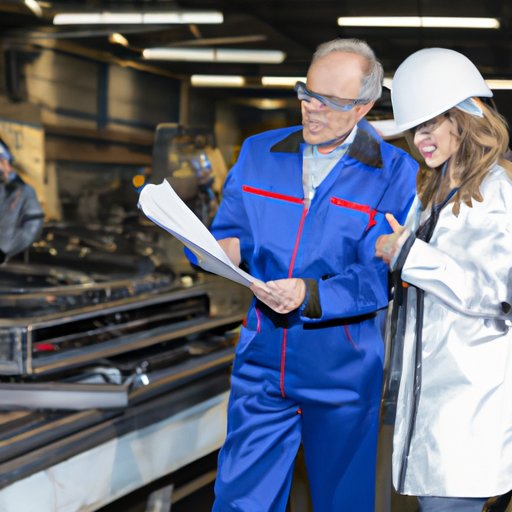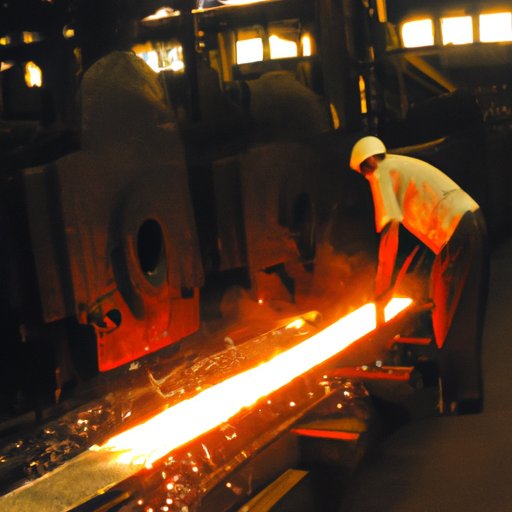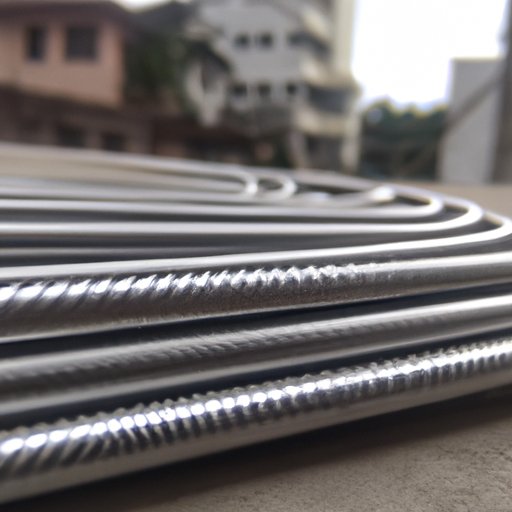Introduction
Steel is an alloy composed of iron and other elements, such as carbon. It is one of the most important materials used in modern society, with applications ranging from automobiles to construction. But when was steel invented? How has it evolved over time? This article will explore the history and evolution of steel production, from its invention in India and China to its current uses in everyday life.
Historical Overview of the Invention of Steel
The earliest known production of steel dates back to 1800 BC in India and 1000 BC in China. At that time, a process called “crucible steel” was used, which involved heating iron ore and charcoal in a clay pot. This process produced a high-quality steel that was used for swords and other weapons.
In the mid-19th century, English inventor Henry Bessemer developed a new steel-making process called the Bessemer process. This process used air blasts to remove impurities from molten iron, resulting in steel of higher quality and lower cost. The Bessemer process revolutionized steel production and made it possible for large-scale steel production.
The industrial revolution of the late 19th century further increased the demand for steel. The development of railroads, bridges, and other infrastructure required large amounts of steel, and production methods had to be adapted to meet this demand. The use of electric arc furnaces and other innovations allowed steel to be produced more quickly and efficiently, leading to a dramatic increase in steel production.
Evolution of Steel Production and Its Impact on Society
The growth of steel production in the 19th century had a significant impact on society. Steel was used in the construction of railroads, bridges, and other infrastructure, allowing for rapid transportation and communication. Steel was also used in the manufacture of ships, cars, and other vehicles, making travel and commerce faster and easier.
The rise of mass production also led to the widespread use of steel in transportation and construction. Steel became the material of choice for many products, from automobiles to skyscrapers. However, the increased use of steel also had environmental consequences, such as air and water pollution.

Examining the Innovations Behind Steel Making
The discovery of new alloys, such as stainless steel and titanium, has enabled steel makers to produce stronger and lighter steels. These new alloys have been used in a variety of applications, from aircraft to medical devices. In addition, technological advances in steel production have allowed steel makers to produce larger quantities of steel more quickly and efficiently.
Modern steel making processes involve melting scrap metal and other materials in an electric arc furnace. This process produces steel of consistent quality and allows for the production of large quantities of steel in a relatively short period of time.

Exploring the People Behind the Invention of Steel
Henry Bessemer was one of the most influential innovators in the field of steel production. His invention of the Bessemer process revolutionized steel production and allowed for the mass production of steel. Other innovators in steel production include Elbert Gary, who developed the open hearth process, and Clarence Kelly Johnson, who developed the first stainless steel alloy.

Benefits of Steel and Its Usage in Everyday Life
The strength and durability of steel make it an ideal material for a wide range of applications. Steel is used in the construction of buildings, bridges, and other structures, as well as in the manufacture of automobiles and other vehicles. Steel is also used in the production of appliances, furniture, and a variety of other products.
Steel has several advantages over other materials, such as its strength, durability, and resistance to corrosion. These qualities make steel an ideal material for a variety of applications, from construction to transportation.
Conclusion
Steel has had a profound impact on society since its invention in India and China thousands of years ago. From its use in transportation and construction to its role in mass production, steel has had a significant effect on the way we live today. The development of new alloys and steel-making processes has enabled steel makers to produce steel more quickly and efficiently, while the strength and durability of steel have made it an ideal material for a wide range of applications.
The invention of steel has changed the world and continues to shape our lives today. The contributions of innovators like Henry Bessemer have helped to make steel an integral part of modern society.
(Note: Is this article not meeting your expectations? Do you have knowledge or insights to share? Unlock new opportunities and expand your reach by joining our authors team. Click Registration to join us and share your expertise with our readers.)
